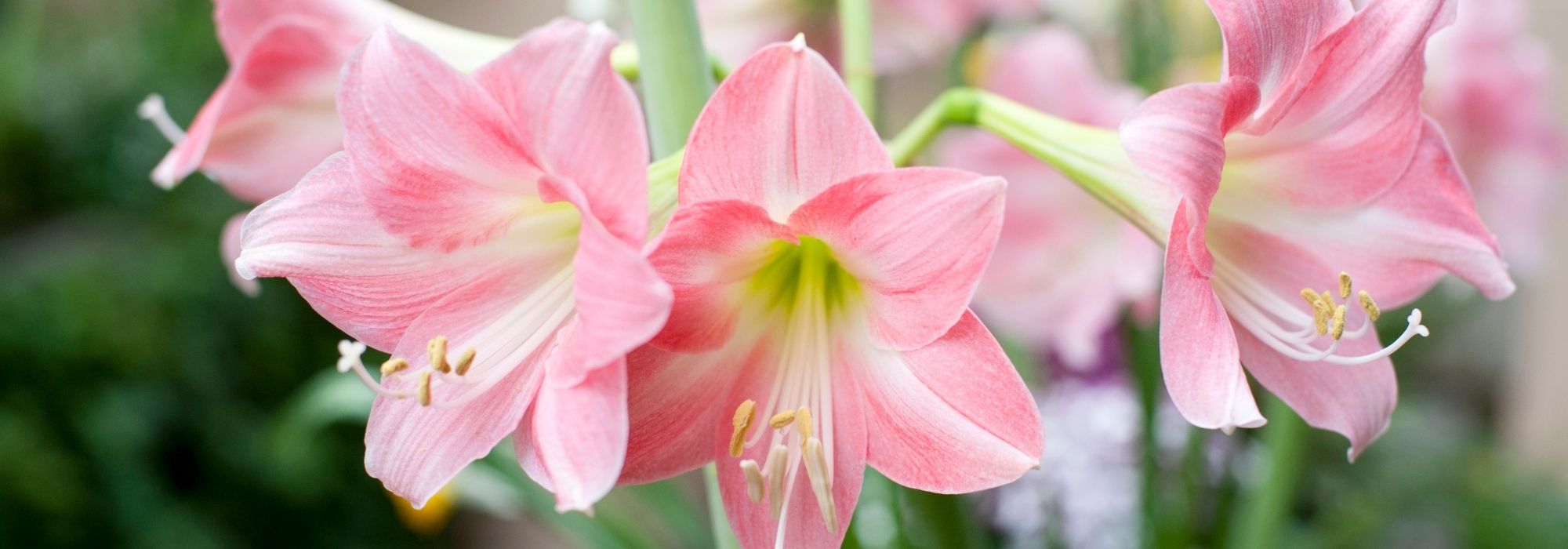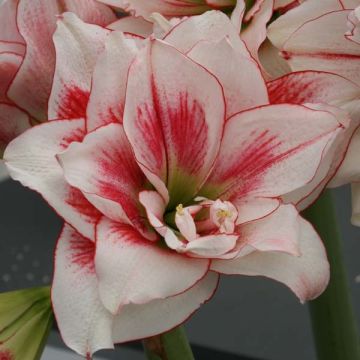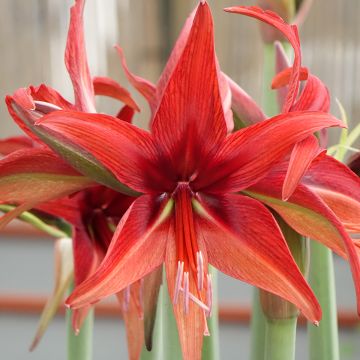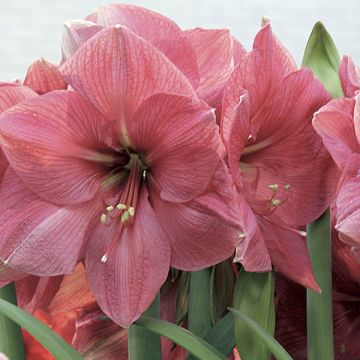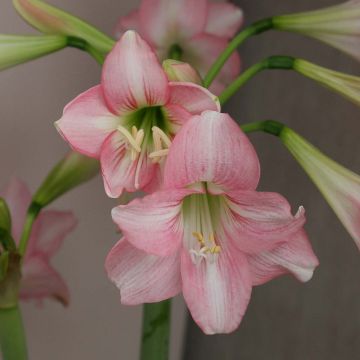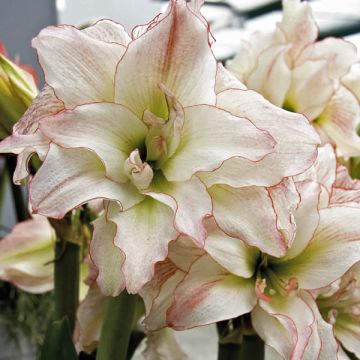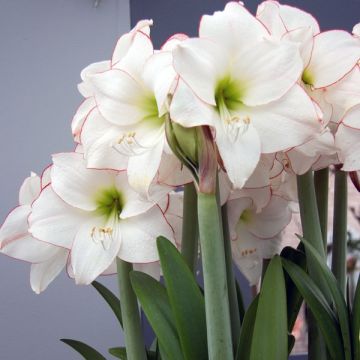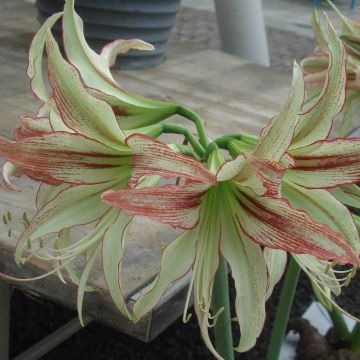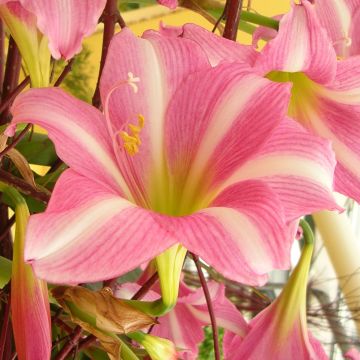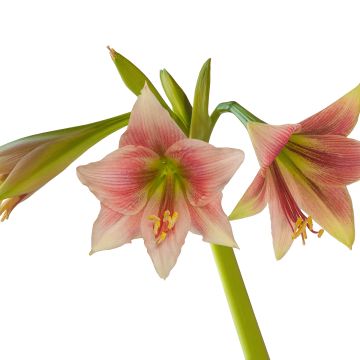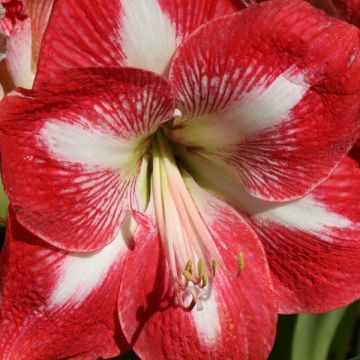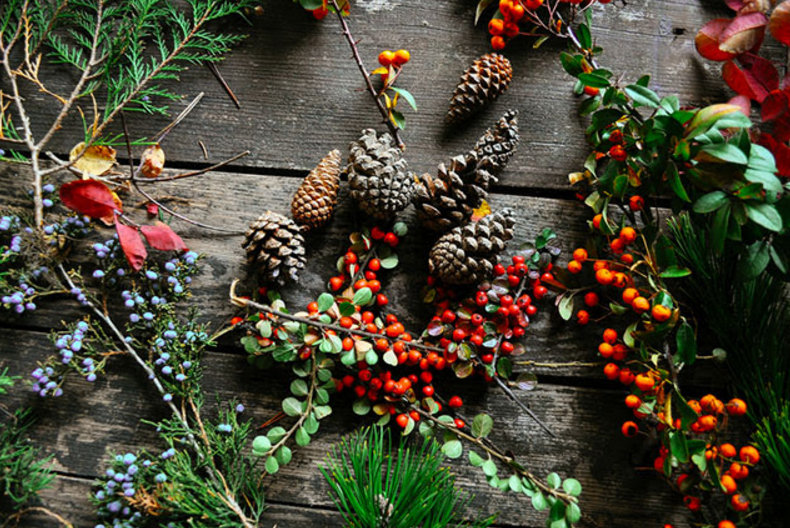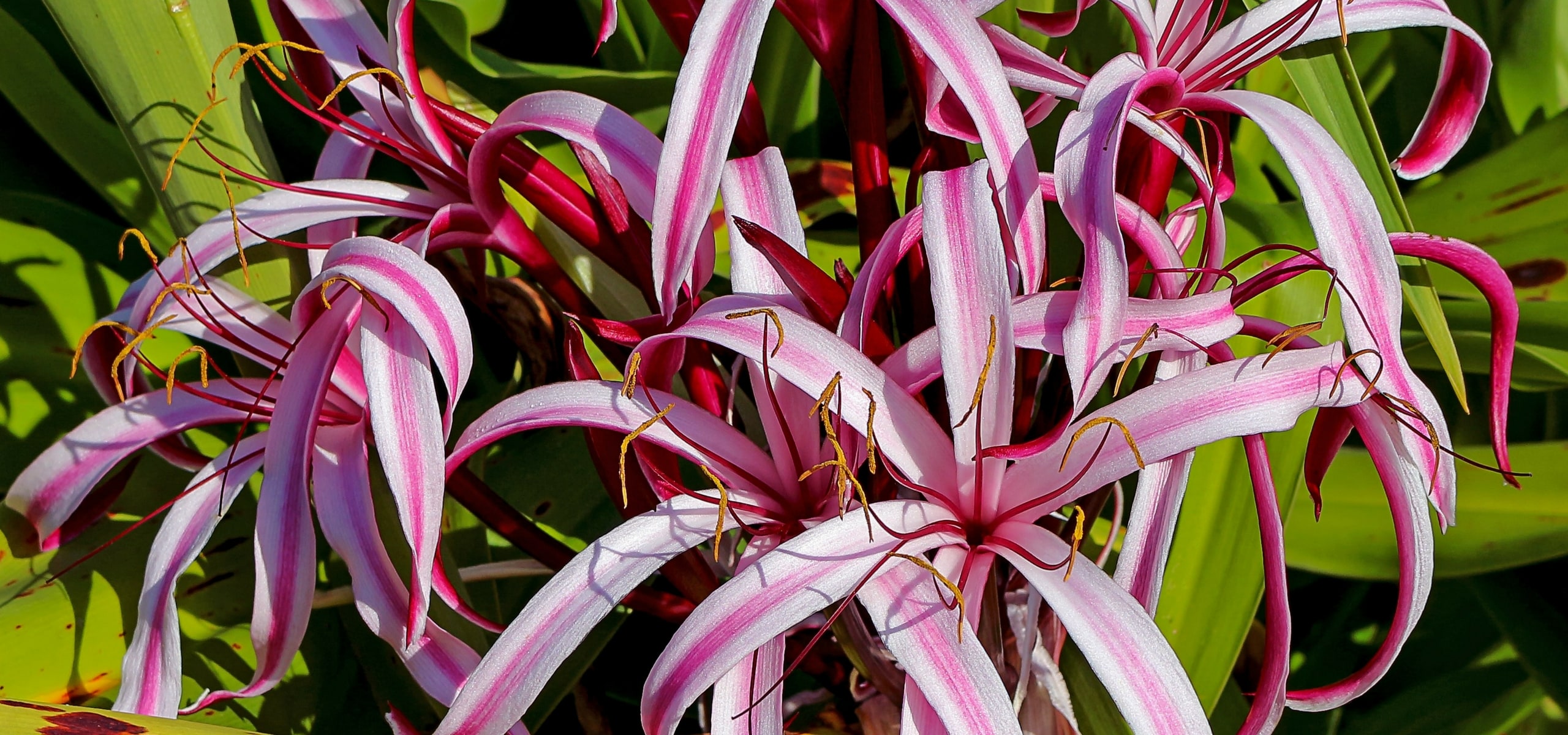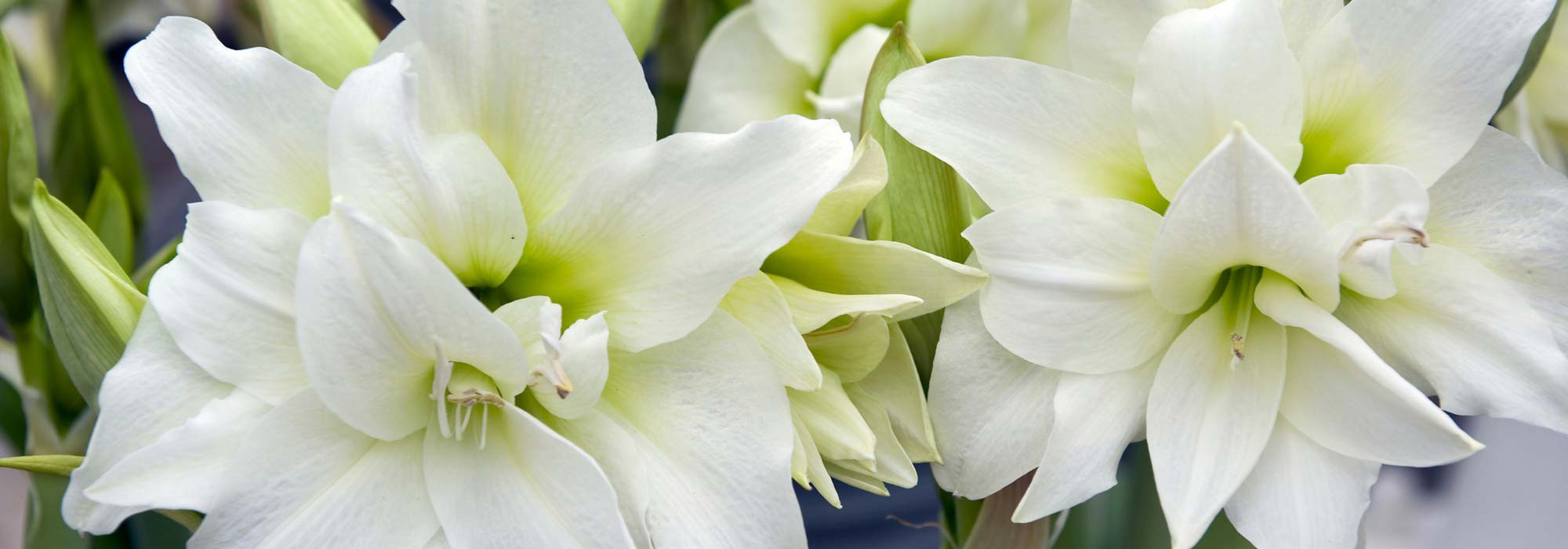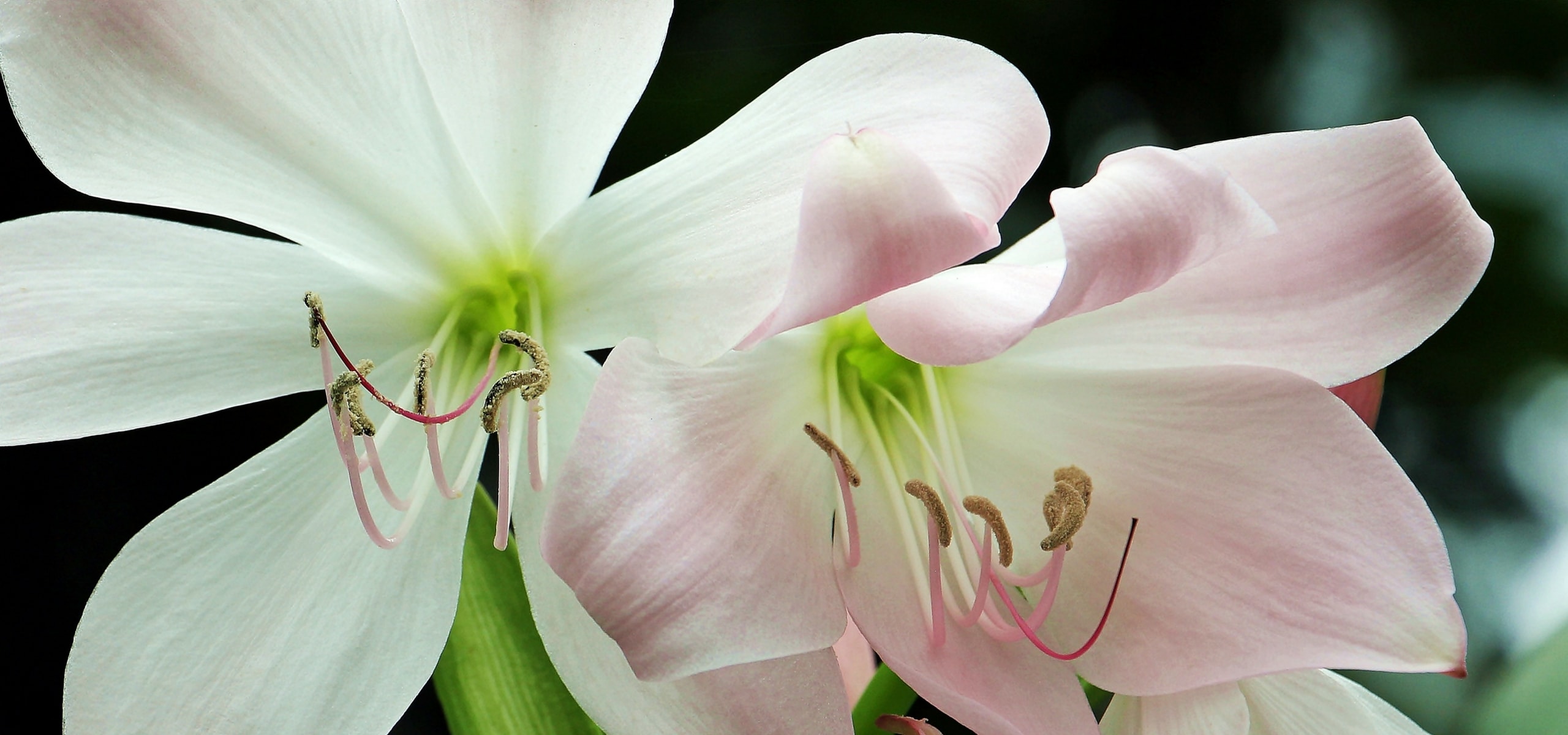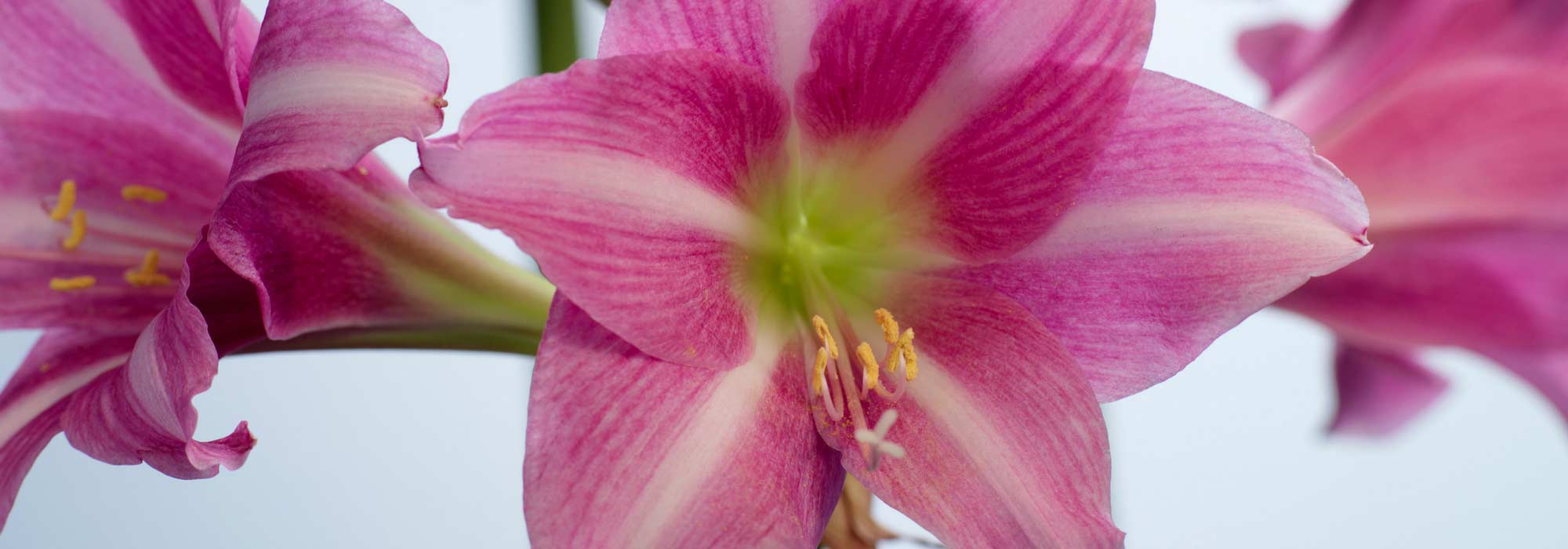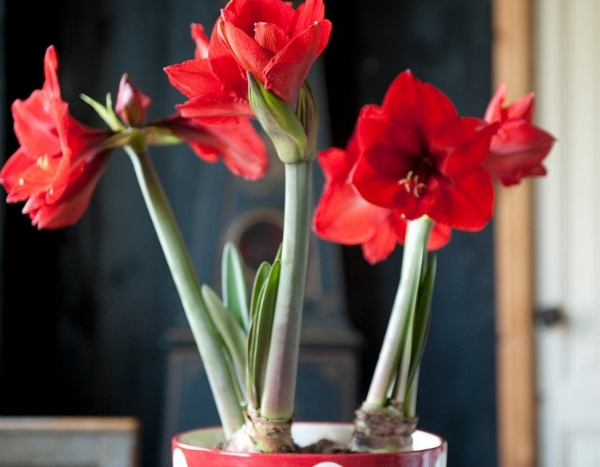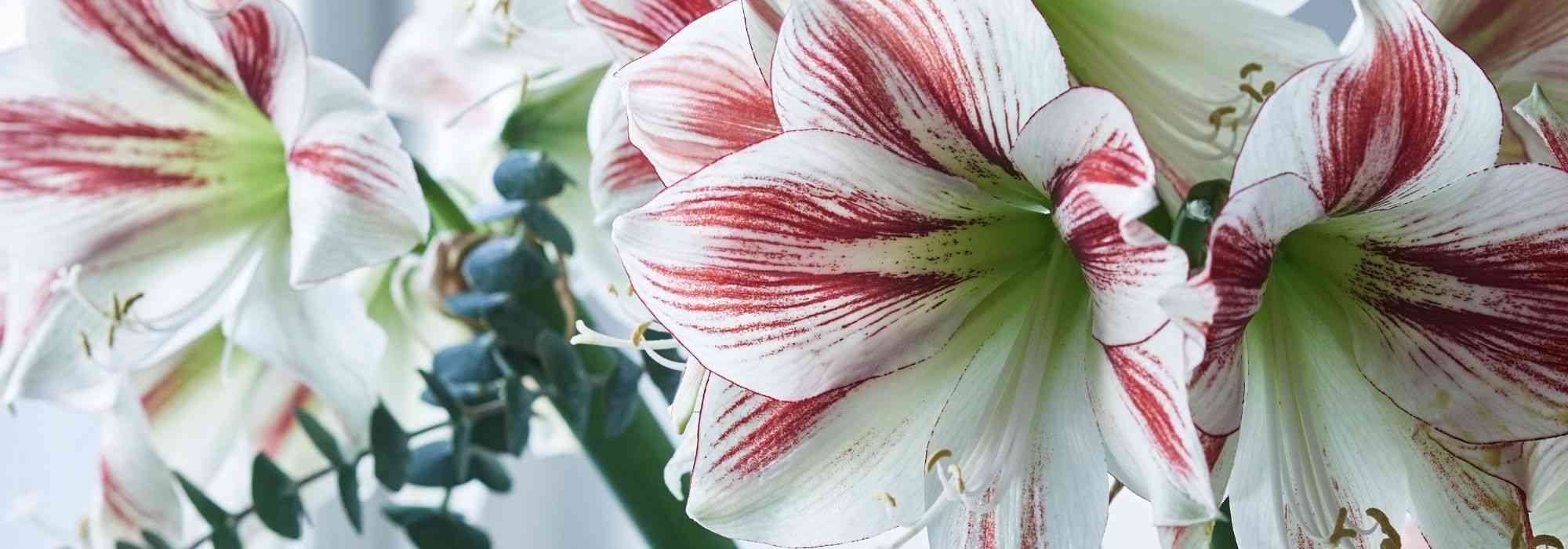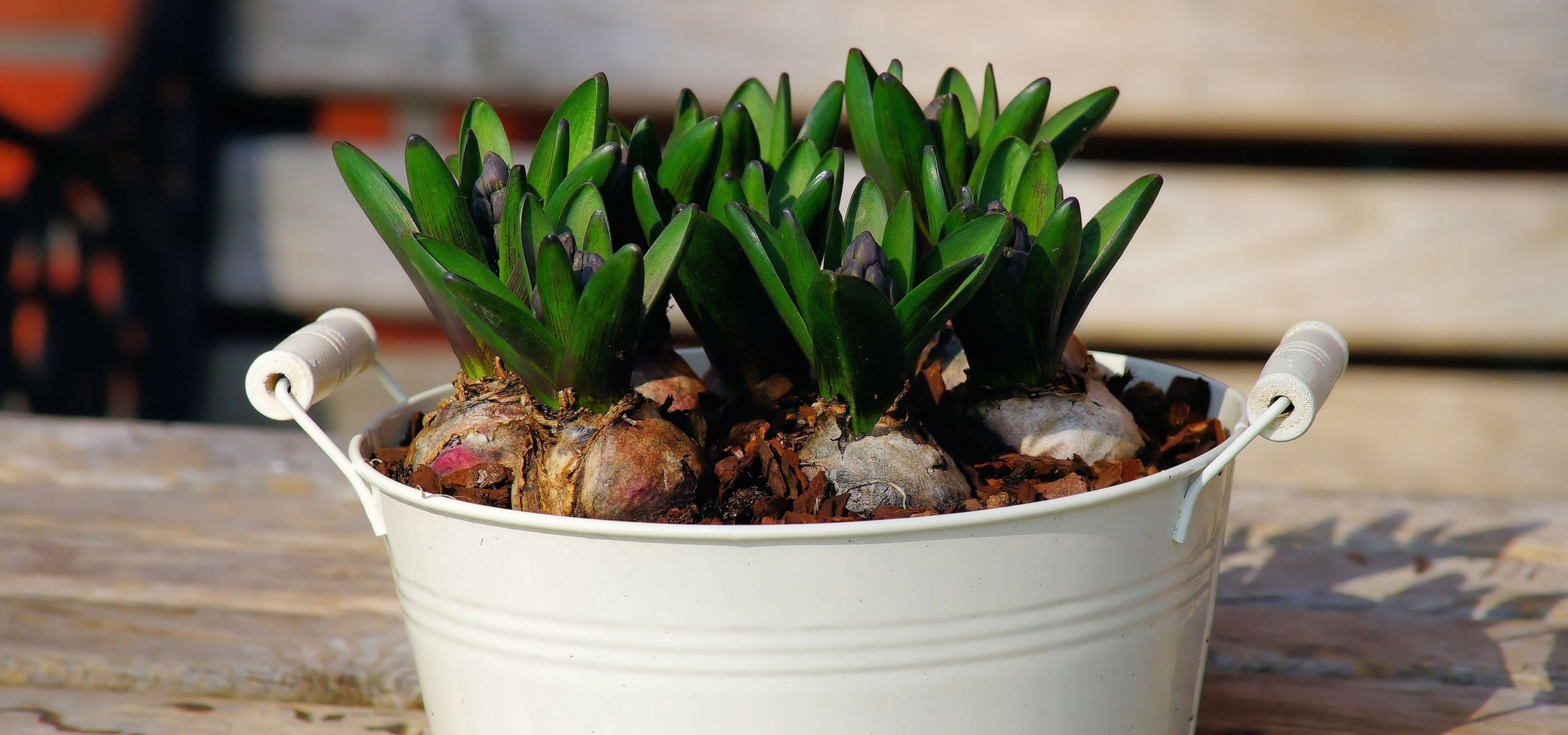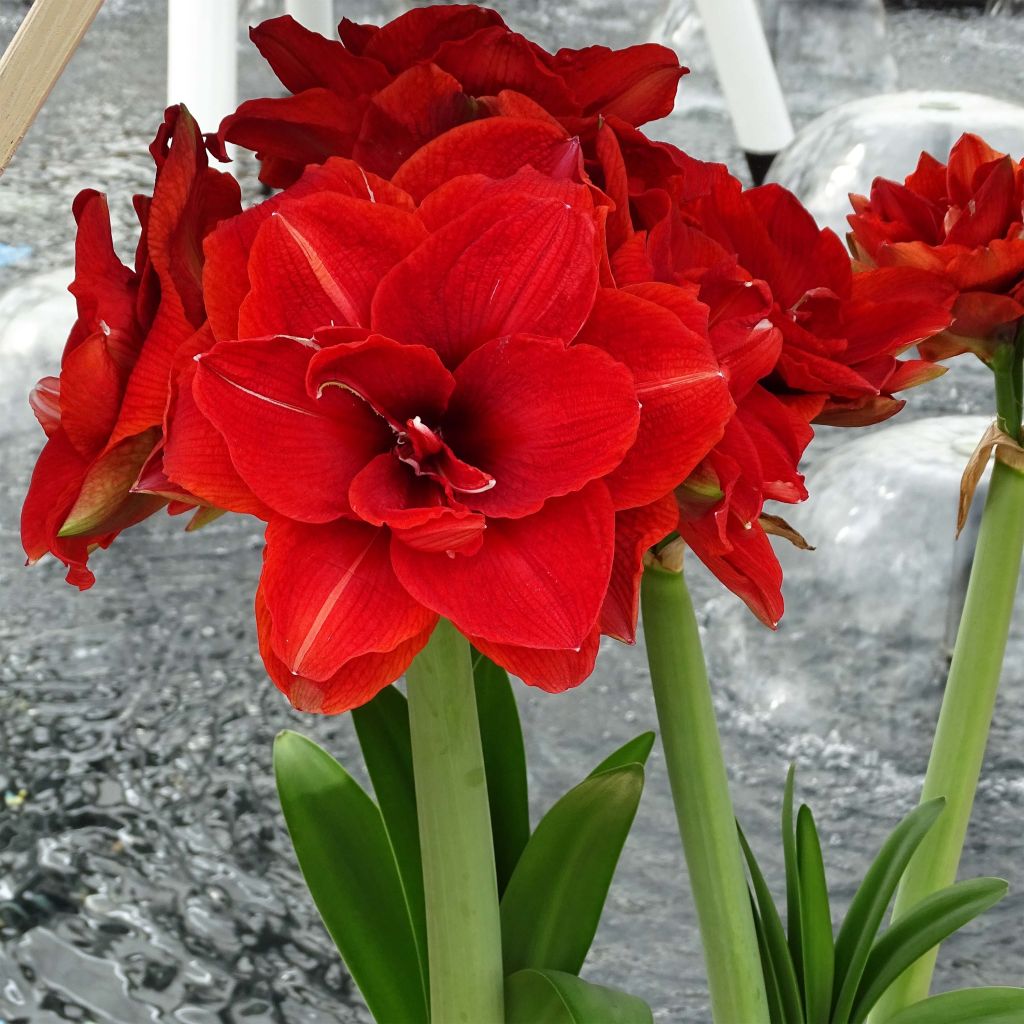

Hippeastrum Cherry Nymph - Amaryllis
Hippeastrum Cherry Nymph - Amaryllis
Amaryllis (Hippeastrum) Cherry Nymph
Amaryllis, Knight's-star-lily
Struggling a bit, but it will bloom
Edmonde, 14/06/2024
Special offer!
Receive a €20 voucher for any order over €90 (excluding delivery costs, credit notes, and plastic-free options)!
1- Add your favorite plants to your cart.
2- Once you have reached €90, confirm your order (you can even choose the delivery date!).
3- As soon as your order is shipped, you will receive an email containing your voucher code, valid for 3 months (90 days).
Your voucher is unique and can only be used once, for any order with a minimum value of €20, excluding delivery costs.
Can be combined with other current offers, non-divisible and non-refundable.
Home or relay delivery (depending on size and destination)
Schedule delivery date,
and select date in basket
This plant carries a 6 months recovery warranty
More information
We guarantee the quality of our plants for a full growing cycle, and will replace at our expense any plant that fails to recover under normal climatic and planting conditions.

Would this plant suit my garden?
Set up your Plantfit profile →
Description
The Hippeastrum 'Cherry Nymph' is a magnificent variety, very popular in the United States during the end-of-year festivities. And one look is enough to understand why! With its large double flowers of a velvety and vibrant cherry red, it blends perfectly with the festive winter decor, with the Christmas tree, sparkling garlands, and fireplace! Its large bulb can produce up to 4 flowering stems, each carrying 4 plump funnel-shaped flowers. Spectacular, with rapid growth, it offers an extraordinary flowering in the heart of winter. Perfect for bringing colour into the house while the garden is still asleep.
From the Amaryllidaceae family, Hippeastrum are native to South America and Central America. They are cultivated in pots in our latitudes and bloom indoors during the Christmas season. In full bloom, the 'Cherry Nymph' variety forms a clump 50 cm (20in) tall (sometimes more) and 30 cm (12in) wide. The double flowers, with wide flared funnels, measure up to 20 cm (8in) in diameter. This immense flowering is composed of numerous pointed, slightly undulating, thick and iridescent petals. The cherry red petals are sometimes marked with white at their tips. The heart of the flower releases smaller petals which are actually petal-like stamens. 4 flowers proudly tower over two to four large and thick hollow stems. Positioned back to back, they together form a unique composition. The leaves are deciduous, ribbon-shaped, and dark green and glossy. They dry up and disappear a few weeks after flowering, when the bulb enters its dormant phase.
Planting an Amaryllis is a very rewarding experience. Hippeastrum is very easy to grow and its growth is extremely rapid; 6 to 10 weeks after planting, the flowers are already blooming. You can enjoy them throughout the winter. To give them as a Christmas gift, remember to plant them at the beginning of November. Create magnificent winter bouquets by combining amaryllis with foliage or budding branches of flowering cherry or Japanese quince.
Speaking of Amaryllis here is actually a misuse of language directly related to an error made in the 18th century. It was Linnaeus himself who used it to name the American species. However, the name was already used for another beautiful flower, this one from South Africa. Conventionally, the denomination Amaryllis was retained for both. And to distinguish them, the mention Hippeastrum was added for the first one and Belladonna for the second one. It must be said that both deserve this name well: Amaryllis means "sparkling" and, in classical Greek literature, the plant was the subject of a pastoral poem where the beautiful shepherdess Amaryllis dies of a love that will only be accessible to her after a terrible wound. From her blood will emerge splendid bunches of red flowers. Since then, the term has been synonymous with haughty beauty.
Hippeastrum Cherry Nymph - Amaryllis in pictures
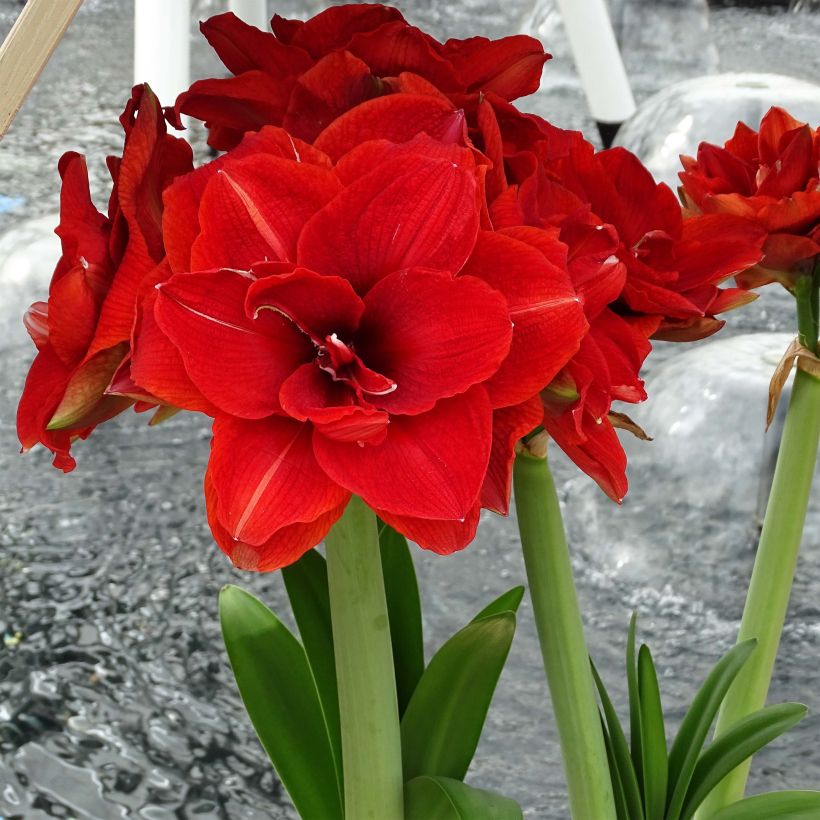

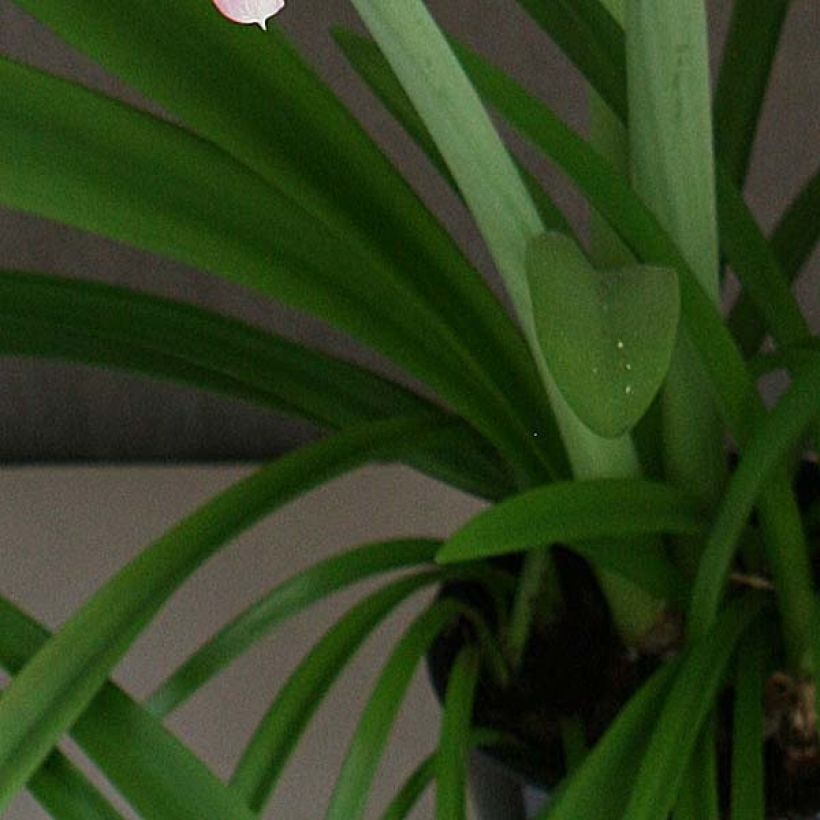

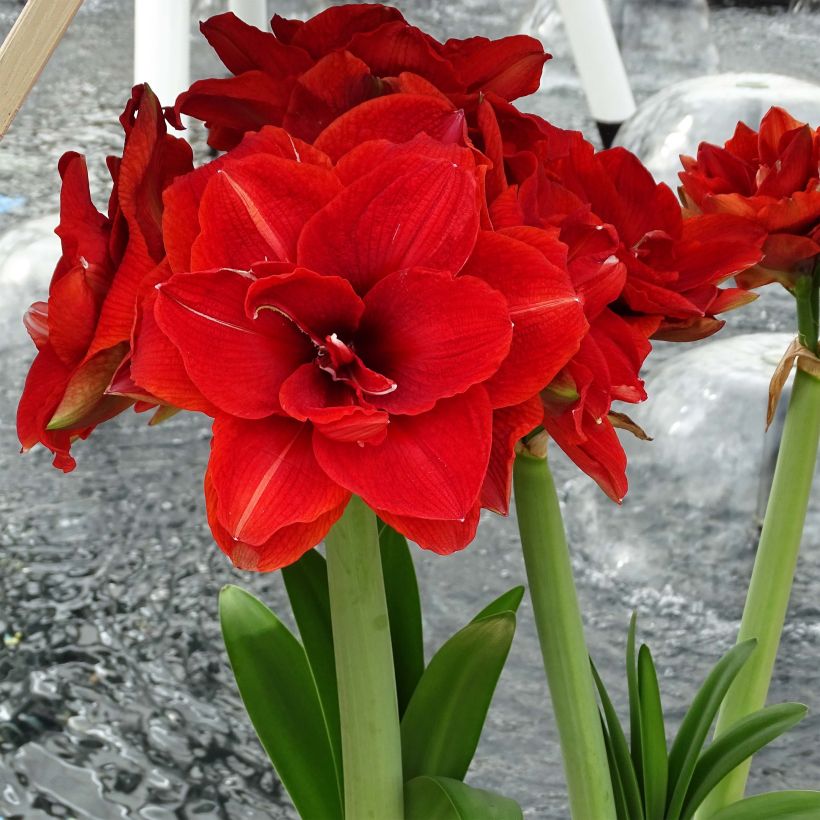

Plant habit
Flowering
Foliage
Botanical data
Amaryllis (Hippeastrum)
Cherry Nymph
Amaryllidaceae
Amaryllis, Knight's-star-lily
Cultivar or hybrid
Other Hippeastrum - Amaryllis
View all →Planting and care
Planting period
Intended location
Care
Planting & care advice
-
, onOrder confirmed
Reply from on Promesse de fleurs
Haven't found what you were looking for?
Hardiness is the lowest winter temperature a plant can endure without suffering serious damage or even dying. However, hardiness is affected by location (a sheltered area, such as a patio), protection (winter cover) and soil type (hardiness is improved by well-drained soil).

Photo Sharing Terms & Conditions
In order to encourage gardeners to interact and share their experiences, Promesse de fleurs offers various media enabling content to be uploaded onto its Site - in particular via the ‘Photo sharing’ module.
The User agrees to refrain from:
- Posting any content that is illegal, prejudicial, insulting, racist, inciteful to hatred, revisionist, contrary to public decency, that infringes on privacy or on the privacy rights of third parties, in particular the publicity rights of persons and goods, intellectual property rights, or the right to privacy.
- Submitting content on behalf of a third party;
- Impersonate the identity of a third party and/or publish any personal information about a third party;
In general, the User undertakes to refrain from any unethical behaviour.
All Content (in particular text, comments, files, images, photos, videos, creative works, etc.), which may be subject to property or intellectual property rights, image or other private rights, shall remain the property of the User, subject to the limited rights granted by the terms of the licence granted by Promesse de fleurs as stated below. Users are at liberty to publish or not to publish such Content on the Site, notably via the ‘Photo Sharing’ facility, and accept that this Content shall be made public and freely accessible, notably on the Internet.
Users further acknowledge, undertake to have ,and guarantee that they hold all necessary rights and permissions to publish such material on the Site, in particular with regard to the legislation in force pertaining to any privacy, property, intellectual property, image, or contractual rights, or rights of any other nature. By publishing such Content on the Site, Users acknowledge accepting full liability as publishers of the Content within the meaning of the law, and grant Promesse de fleurs, free of charge, an inclusive, worldwide licence for the said Content for the entire duration of its publication, including all reproduction, representation, up/downloading, displaying, performing, transmission, and storage rights.
Users also grant permission for their name to be linked to the Content and accept that this link may not always be made available.
By engaging in posting material, Users consent to their Content becoming automatically accessible on the Internet, in particular on other sites and/or blogs and/or web pages of the Promesse de fleurs site, including in particular social pages and the Promesse de fleurs catalogue.
Users may secure the removal of entrusted content free of charge by issuing a simple request via our contact form.
The flowering period indicated on our website applies to countries and regions located in USDA zone 8 (France, the United Kingdom, Ireland, the Netherlands, etc.)
It will vary according to where you live:
- In zones 9 to 10 (Italy, Spain, Greece, etc.), flowering will occur about 2 to 4 weeks earlier.
- In zones 6 to 7 (Germany, Poland, Slovenia, and lower mountainous regions), flowering will be delayed by 2 to 3 weeks.
- In zone 5 (Central Europe, Scandinavia), blooming will be delayed by 3 to 5 weeks.
In temperate climates, pruning of spring-flowering shrubs (forsythia, spireas, etc.) should be done just after flowering.
Pruning of summer-flowering shrubs (Indian Lilac, Perovskia, etc.) can be done in winter or spring.
In cold regions as well as with frost-sensitive plants, avoid pruning too early when severe frosts may still occur.
The planting period indicated on our website applies to countries and regions located in USDA zone 8 (France, United Kingdom, Ireland, Netherlands).
It will vary according to where you live:
- In Mediterranean zones (Marseille, Madrid, Milan, etc.), autumn and winter are the best planting periods.
- In continental zones (Strasbourg, Munich, Vienna, etc.), delay planting by 2 to 3 weeks in spring and bring it forward by 2 to 4 weeks in autumn.
- In mountainous regions (the Alps, Pyrenees, Carpathians, etc.), it is best to plant in late spring (May-June) or late summer (August-September).
The harvesting period indicated on our website applies to countries and regions in USDA zone 8 (France, England, Ireland, the Netherlands).
In colder areas (Scandinavia, Poland, Austria...) fruit and vegetable harvests are likely to be delayed by 3-4 weeks.
In warmer areas (Italy, Spain, Greece, etc.), harvesting will probably take place earlier, depending on weather conditions.
The sowing periods indicated on our website apply to countries and regions within USDA Zone 8 (France, UK, Ireland, Netherlands).
In colder areas (Scandinavia, Poland, Austria...), delay any outdoor sowing by 3-4 weeks, or sow under glass.
In warmer climes (Italy, Spain, Greece, etc.), bring outdoor sowing forward by a few weeks.






























